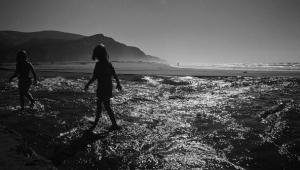Memory and Backup: Critical Issues for Digital Photographers
The storage of your digital images raises some new issues of photo housekeeping. While you might make prints of some of the pictures you take with your digital camera it's more than likely most will remain in electronic form. It all begins with the memory card, the place where the images sit inside your camera. But once that card fills up you have to move the images out to make room for more. That's when you download the pictures to your computer, be it laptop or desktop. But as you make more and more digital pictures even that 30 gig hard drive will begin to fill up. That's when you will want to start "backing up" your images by making a recording of them onto a CD or DVD disc. "Burning" software is easier to use than ever before, and putting your images onto a CD is smart practice, as you protect them from any chance of loss due to hard drive "meltdown." In fact, professional photographers, whose images pay the rent, make a few copies of each image, one for general backup that they keep in their studio and one for the bank vault, where only a visit from Willie Sutton might cause their loss.
And the demand for greater storage capacity, and the need to clear your hard drive of images is now greater than ever before. In the early days of digital photography (way, way back in the nineties) digital image files were small and storage was less of a problem. But now that cameras with 5 and 6 megapixels are more common, with some individual image files being 15 or 18 megabytes each, hard drives can fill up quickly.
With that in mind, here are some storage tips that will allow you to take more pictures in the field, and keep them safe when you get home.
In the field: Making the Most of Your Memory Cards
*Get a larger capacity memory card: With price per megabyte getting lower all
the time, 256MB, 512MB and even 1 gig memory cards are more affordable then
ever before. You can get a larger capacity card, or get a few extra medium capacity
cards to take you through the day.
*Download as you go: Rather than shoot your entire vacation on one card, carry
a laptop or portable storage device and memory card reader and download images
every night. This gives you a chance to view, edit and clear your card for tomorrow's
photography. Portable hard drive/viewer devices that allow you to minimize what
you have to carry and provide a safe, secure way to download as you go.
At home: Digital Image Housekeeping
*Download your cards as soon as possible when you get home. After downloading,
edit and sort your images so you can find them later. Programs such as Adobe
Photoshop Album, ACDSee, Picasa and others make editing and placing images in
"albums" easy. Delete bad exposures and poor composition and keep
the best from a series of shots of the same subject. Editing is the best way
to save space.
*Consider a backup hard drive: Why keep all your images on your desktop hard
drive? Backup hard drives as big as 40 or 60 gigabytes are very affordable these
days.
*Backup, backup, backup: Even if you have a monster hard drive on your desktop
computer it's a very good idea to make CD ROM or DVD backups of your precious
images. That way, if your hard drive goes down you always have a safe place
for your pictures.
Here are some companies whose web sites will give you more information on storage and backup solutions:
Memory Cards
www.lexarmedia.com
www.sandisk.com
www.pny.com
Portable Download Devices:
www.delkin.com
www.smartdisk.com
www.jobodigital.com
Hard Drive Backups:
www.maxtor.com











































